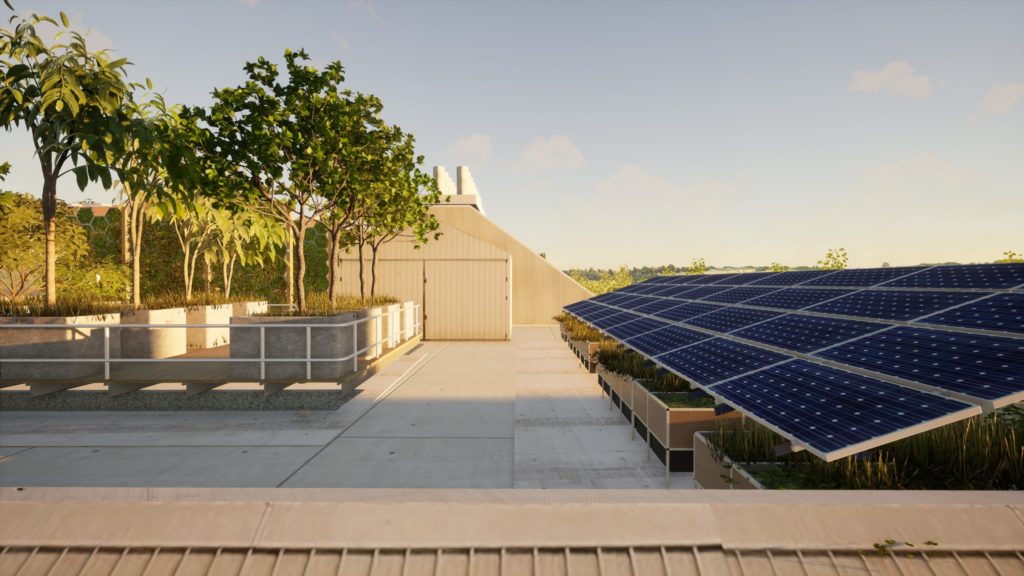Griffith University has teamed with Aria Property Group in a new testing facility dedicated to researching the performance of trees and plants that are embedded in green buildings.
The project is being created through a funding, design and construction partnership between Griffith University’s Green Infrastructure Research Labs and Aria. It will be welcomed by developers and designers who have found their promised green wall and building designs fail for commonly unspecified reasons.
Dr Tony Matthews, a senior lecturer in urban and environmental planning at Griffith University, told The Fifth Estate he believes the long-cycle facility will be the first of its kind in a subtropical region anywhere in the world.
“What we’re building is a facility that will allow us to test the performance of different types of trees and different types of shrubs, embedded into the fabric of buildings, either into the walls of the buildings, or onto their roofs,” Dr Matthews said.
“We’re building this facility so that we can do long term analysis of species that will thrive in this setting, as well as irrigation regimes, nutrient regimes, and soil mixes.
“It will resolve a lot of those questions that currently are unresolved around things like planter design, soil mixes, irrigation and scheduling.
“In order to do that experimental research, we need to have infrastructure. We’ve had to build our own infrastructure because nothing like what we needed already existed.”
Believed to be the first of its kind
Following more than a year of planning, tenders for the construction of the Green Infrastructure Research Testing Facility are set to open over the coming weeks, with the facility expected to be completed by the end of the year.
According to Dr Matthews, design of the facility posed a number of significant design and engineering challenges.
“There was no other facility anywhere in the world that we could point to and say: ‘Oh, yeah, that’s basically what we’re planning on doing. Let’s just see what they did and copy that.’ So it took us a year to design,” Dr Matthews said.
The facility will be built on the rooftop of a university building so “we’ll basically have a small forest growing on top of the building on one of our university campuses”.
“There’s been enormous structural challenges, because we want to put tonnes and tonnes of soil and trees and all kinds of things off the top of an existing building, which is full of offices and labs.”
A growing partnership
The partnership is the latest in a series of collaborations between Aria and the university. The two organisations previously joined forces with the Queensland College of Art (QCA) to support the Hope Street Studio in South Brisbane in April 2020.
“Aria Property Group is one of the major private developers who are trying to build greenery into the very fabric of the buildings that they’re designing. They have a very focused commercial interest in this, in the sense that they want their buildings obviously to perform well and sell well,” Dr Matthews said.
“They want to design the best possible buildings that integrate nature as much as possible. They’re working with us so that we can give them reliable data over time that will really give them some certainty about some of their design and investment decisions, to ensure their buildings continue to thrive in terms of their natural features.”
Dr Matthews said the work that will be produced by the facility will be vitally important because people want to live in greener cities with more nature.
“Increasingly, we’re starting to turn our attention to integrating that nature into the very fabric of buildings themselves. But as you can imagine, that comes with a great deal of uncertainty and technical challenge.
“That might sound kind of mundane, but if you don’t have accurate data and you don’t know how to discharge design and maintenance responsibilities properly, then your green infrastructure will die. And then you’re going to be even worse off than you were before.”
Green infrastructure testing more broadly in terms of species selection and performance is not widely studied in the global subtropics, he said.
“There’s a lot more knowledge and research and data in other climate zones than in subtropical zones. But there’s a lot of people living in the subtropics globally. So that’s the population that will be scaling our research towards.”
